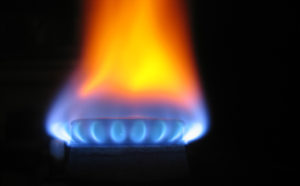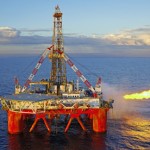 Natural gas remained on positive territory most of the day but is still headed for a weekly decline as weather forecasting models continued to point at cooler-than-normal temperatures across key consuming areas, which would likely widen the stockpiles surplus over the five-year average.
Natural gas remained on positive territory most of the day but is still headed for a weekly decline as weather forecasting models continued to point at cooler-than-normal temperatures across key consuming areas, which would likely widen the stockpiles surplus over the five-year average.
On the New York Mercantile Exchange, natural gas for delivery in September traded at $3.309 per million British thermal units, up 0.35% on the day. Prices held in range between days high and low of $3.326 and $3.304 per Mmbtu. The fuel snapped an 11-day falling cycle on Thursday and surged 2.76% as market players closed nicely priced positions at the bottom and erased previous daily losses. Despite the gains, the fuel is still headed to a weekly decline, having trimmed weekly losses to 1.0% so far.
Natural gas was pressured in the last couple of weeks as weather forecasters continued to predict mild temperatures in key consuming areas. According to Commodity Weather Group LLC in Bethesda, Maryland, temperatures will be average or below-average in the eastern parts of the U.S. The highest temperature in New York on August 16 should be 77 degrees Fahrenheit, 6 below the average, while temperatures in Chicago may peak at 79 degrees Fahrenheit, 3 below usual, according to AccuWeather Inc.
When above-normal temperatures are expected, natural gas surges as increased electricity demand to power air-conditioning calls for more supply of the fuel, which is used for a quarter of the U.S. electricity generation. Mild temperatures have the opposite effect.
Jason Schenker, president of Prestige Economics in Austin, Texas, said for Bloomberg: “We’re going to see continued solid injections into storage as we trade the September contracts and move closer to the shoulder period.”
On Thursday, the Energy Information Administration reported that U.S. gas stockpiles rose by 96 billion cubic feet in the week ending August 2, surpassing analysts’ expectations. Total inventories equaled 2 941 billion cubic feet, 9.2% below last year’s 3 238 billion cubic feet during the comparable week. Last week’s figure however rose 0.7% above the five-year average storage at 2 921 billion cubic feet, marking the first surplus since March.
The EIA also said that inventories in the Producing Region received a net injection of 15 billion cubic feet and were 76 billion above the five-year average of 973 billion. In the East Region, stockpiles rose by 58 billion cubic feet and were 105 billion below the five-year average.
According to a Bloomberg survey of analysts and traders, eight out of thirteen questioned, or 62%, wagered that natural gas futures will fall next week. Four analysts, or 31%, expected the fuel to remain flat and only one predicted prices will surge.





